And if I devoted my life to one of its feathers?
15 May - 26 Sep 2021
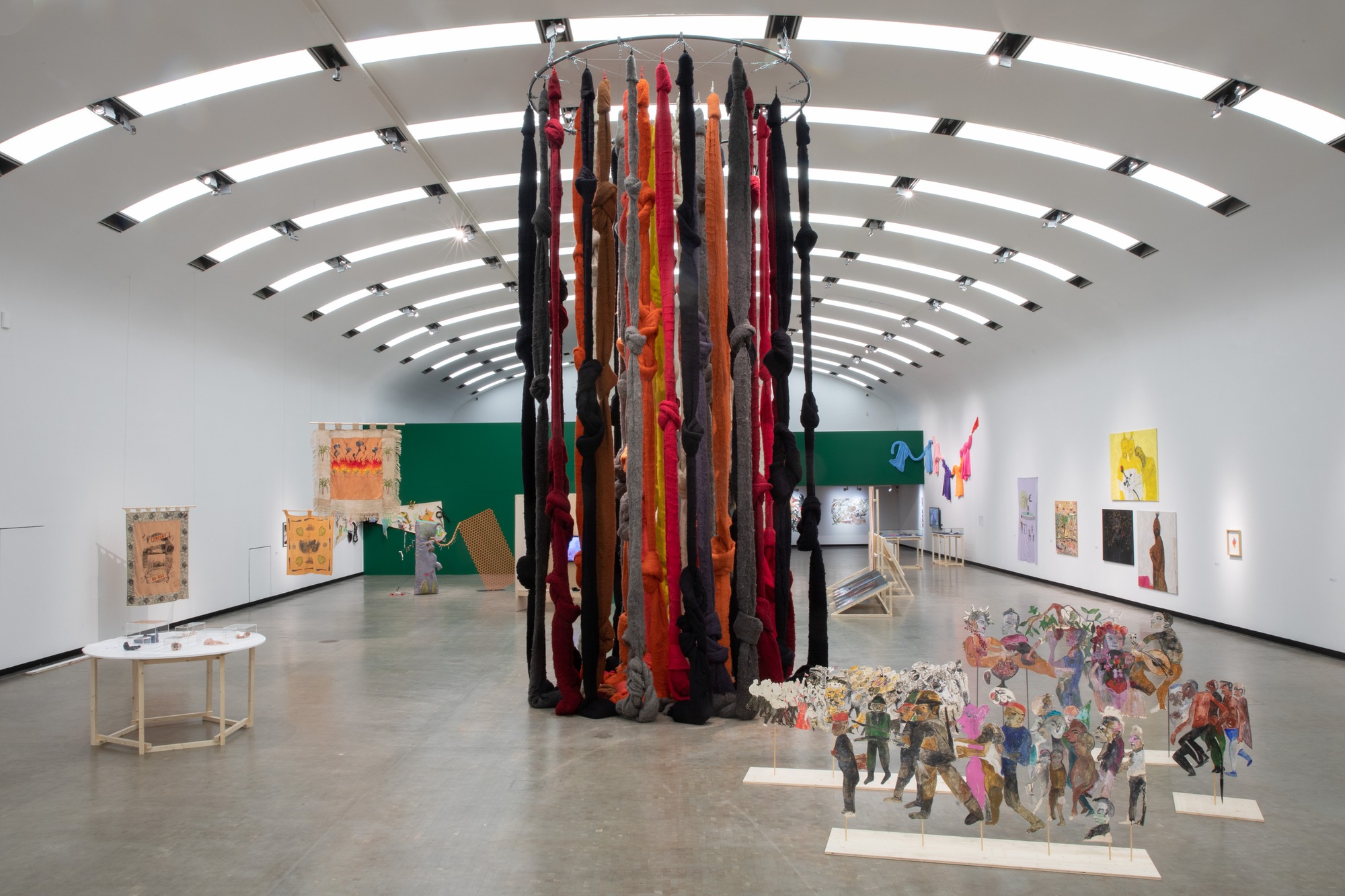
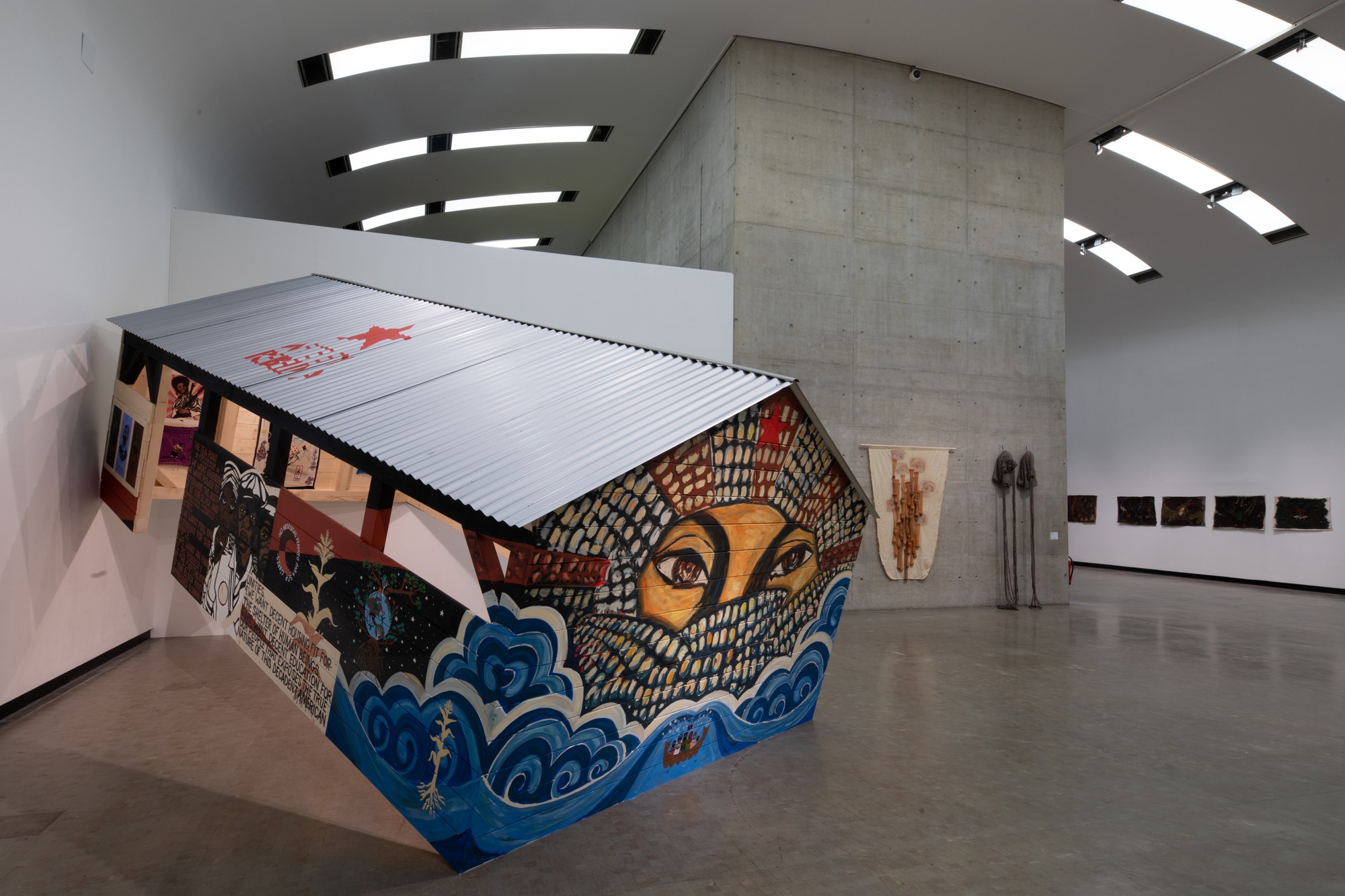

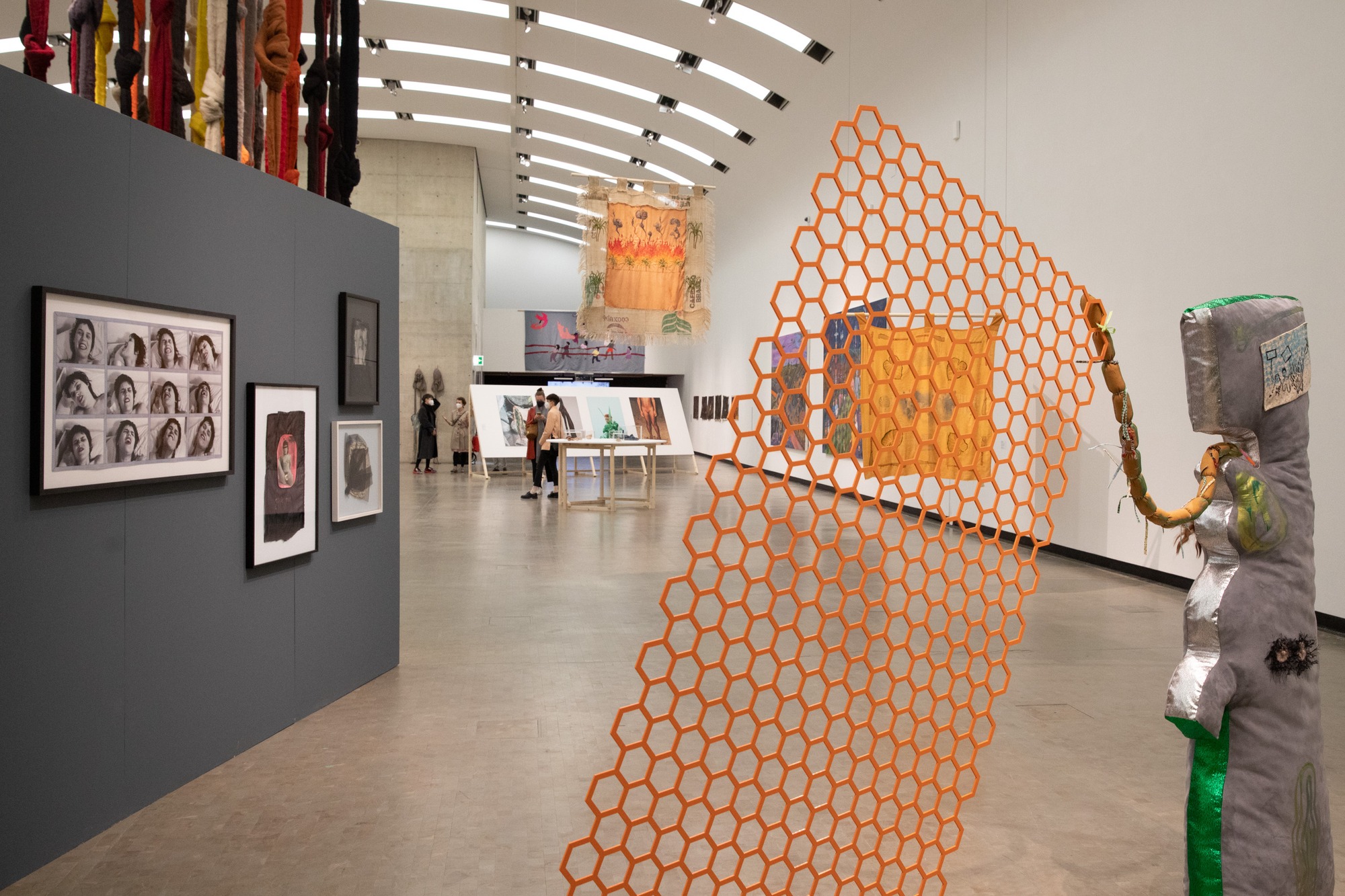


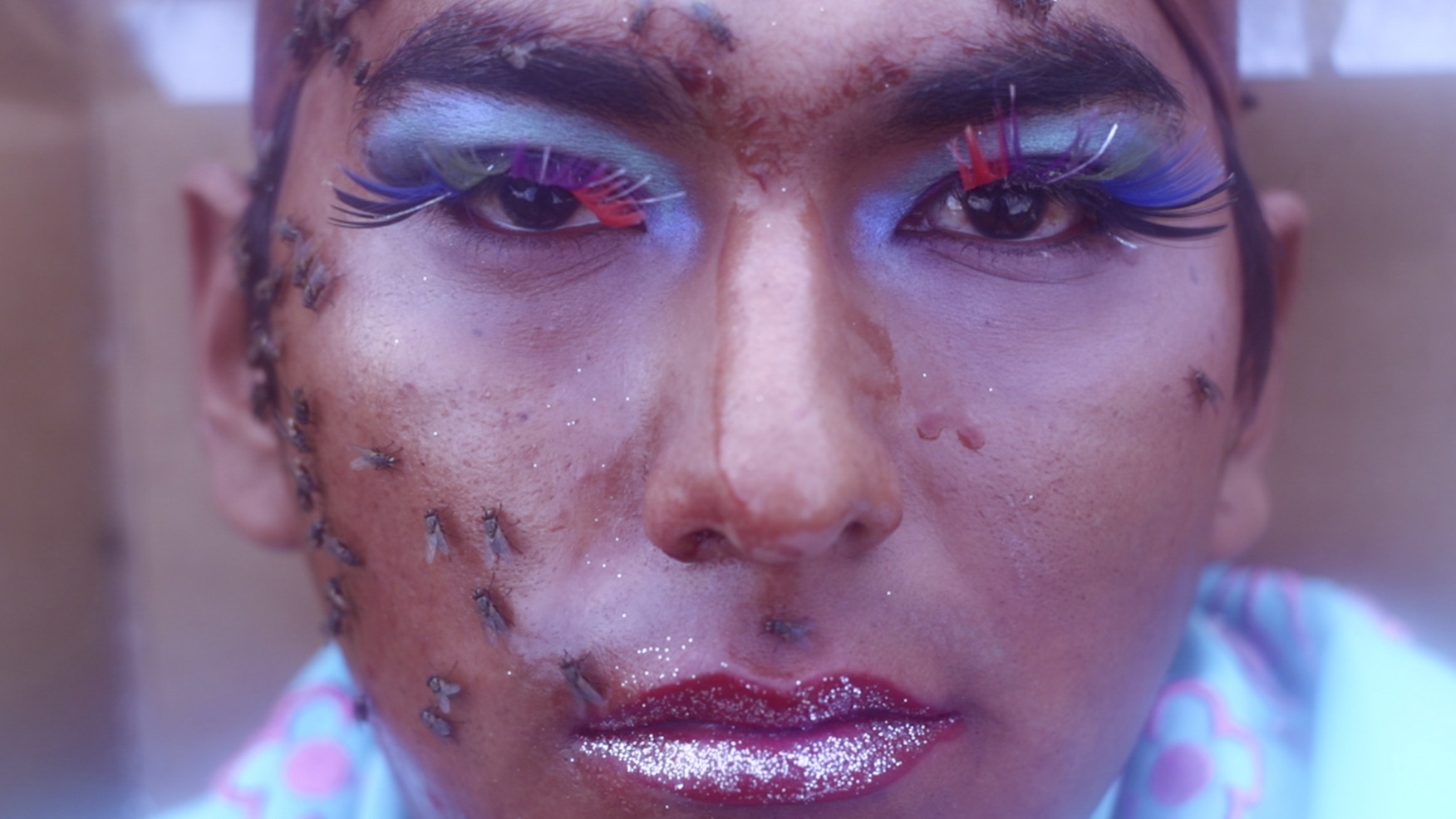
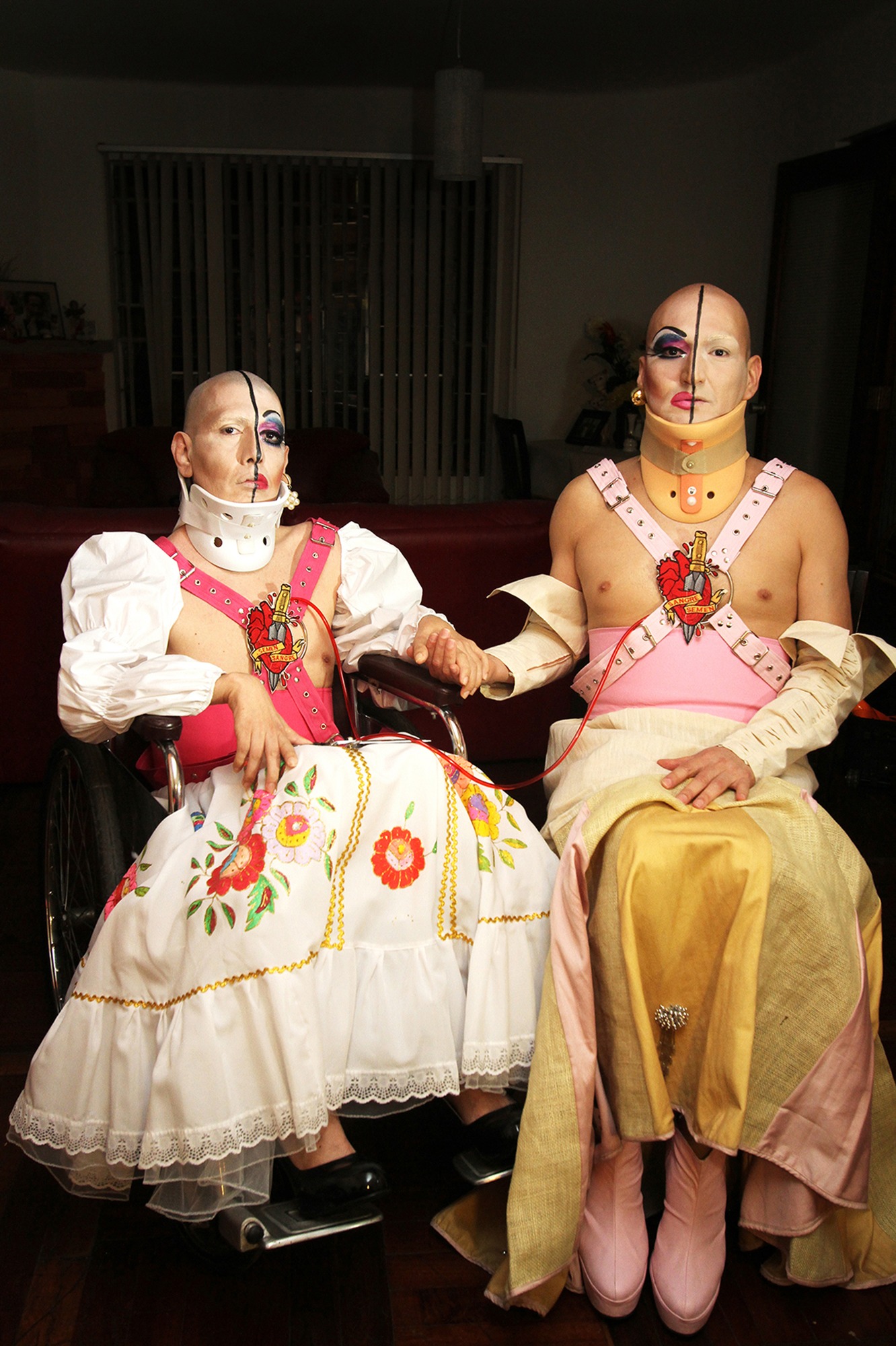
Curatorial assistant: Laura Amann
A joint exhibition of kunsthalle wien and Wiener Festwochen
Artists: Babi Badalov • Denilson Baniwa • Patricia Belli • Amoako Boafo • Anna Boghiguian • Victoria Cabezas • Quishile Charan • Manuel Chavajay • Chto Delat • Rosa Elena Curruchich • Annalee Davis • Vlasta Delimar • Jim Denomie • María Galindo & Danitza Luna • Nilbar Güreş • Sheroanawe Hakihiiwe • Hiwa K • Karrabing Film Collective • Germain Machuca • Daniela Ortiz • Prabhakar Pachpute • Amanda Piña • Roldán Pinedo / Shöyan Sheca • Sandra Salazar • Victoria Santa Cruz • Olinda Silvano / Reshinjabe • SPIT! (Sodomites, Perverts, Inverts Together! / Carlos Maria Romero, Carlos Motta & John Arthur Peetz) • Sophie Utikal • Cecilia Vicuña • Castiel Vitorino Brasileiro • Anna Witt • Bartolina Xixa • Santiago Yahuarcani • Zapantera Negra ...
“And if I devoted my life to one of its feathers?” writes the Chilean poet, artist and activist Cecilia Vicuña in an untitled poem from the late 1960s, early 1970s. With this question Vicuña counters anthropocentric and hetero-patriarchal urges with healing and appreciation, reviving the aesthetic and spiritual bonds between human and nonhuman entities and worlds.
The exhibition And if I devoted my life to one of its feathers?, curated by Miguel A. López, revolves around this very vision of interconnectivity that Vicuña portrays in her poem by bringing together artists whose practices engage in the struggle for collective survival and the processes involved in restoring disrupted social bonds. Indigenous epistemologies are understood as central in order to explore the possibilities of interweaving the poetic gesture with radical political action. With their works, the more than 35 exhibiting artists – who are located everywhere from the Amazon region to Australia, from Guatemala to India – seek not only to awaken public consciousness to the realities of environmental exploitation and destruction, but also to deconstruct traditional Western patriarchal models, gender roles, and enduring colonial and racist discourses.
The exhibited works critically examine the breakneck pace with which raw materials are mined and the environmental destruction inflicted by neoliberalism. Indigenous positionalities burst through colonial legacies to remind us of the continuation of extractive logics in the twenty-first century. Works exploring solidarity based and anticolonial feminisms highlight the struggle against patriarchal capitalism and state oppression, while others tell stories of reverse migrations and forms of affective belonging.
Trying to convene a more poetic conversation rather than a theoretical statement, this exhibition looks at how artists from different localities are engaged in opposing the normalization of capitalist social relations and capitalism’s embeddedness in racist, sexist, and homophobic structures as well as a model of liberal democracy that is sustained through inequality. In different ways, the works respond to the violence and devastation from ritualistic, emotional, and sensitive perspectives rather than a purely rational one. Against widespread cynicism, they uphold various forms of commitment and transformative political desire.
This joint exhibition by kunsthalle wien and Wiener Festwochen was originally scheduled to open in May 2020, but had to be postponed because of the worldwide Covid-19 crisis. Some of the contributions are therefore a specific response to the pandemic, not just as a health crisis, but also as one of ecological and social justice. The works of And if I devoted my life to one of its feathers? form an assembly of many worlds – in order to initiate a unique conversation about power, sovereignty, self-representation, and the reclaiming of a plurality of life choices.
THE ARTISTIC CONTRIBUTIONS
By Miguel A. López
Environmental colonialism, toxic contamination, and the destruction of ecological diversity are heavily represented in many of the works, including a choreographic piece made in an open-air landfill by the Andean drag performer Bartolina Xixa titled Ramita Seca, La Colonialidad Permanente [Dry Twig, The Permanent Coloniality] (2019); the psychedelic film Mermaids, Mirror Worlds (2018), by the Indigenous media group Karrabing Film Collective, about poisoned land- and seascapes; Annalee Davis’s The Parasite Series (2018–2019) on Caribbean post-plantation economies; and Manuel Chavajay’s Iq’am (2014) and Keme (2016) series of paintings and drawings, made with petroleum on paper. These works not only point out how the globalized economy relies extensively on extractive industries (including the unsustainable use of fossil fuels, for example) but also foreground the physical and emotional effects on the bodies of those displaced or forced to hold precarious labor because of this economic model.
The recent forest fires in the Amazon and the profound global consequences of climate change, precarious global health, and the failure to protect Indigenous lands appear in powerful pieces such as the monumental dyed-wool installation Burnt Quipu (2018) by Cecilia Vicuña and the paintings Bye Bye Brazil (2020) and Mártires Indígenas 2 [Indigenous Martyrs 2] (2021) by Denilson Baniwa. While Vicuña and Baniwa address the representation of fire in relation to annihilation, loss, and survival, Quishile Charan’s new textile work Burning Ganna Khet [Burning Sugarcane Farm] (2021) presents a penetrating image of flames running across a sugarcane field as a form of honoring the traditional farming practices of her family and ancestors in Fiji. As in the case of Charan and Vicuña, various types of textile practices — including embroidery, quilting, and weaving — have a strong presence in the exhibition, creating a dialogue between experimental and traditional techniques, as well as reclaiming respect for women’s labor and highlighting its use as a form of feminist activism.
Other works tackle human supremacy or human exceptionalism: the idea that humans are unique and superior in relation to other animals and nonhuman forms. Some make fun of human arrogance through theatrical settings that portray absurdity, uncertainty, or imminent destruction — as in Hiwa K’s Pre-Image (Blind as the Mother Tongue) (2017), Babi Badalov’s painted fabrics and visual poetry, and Anna Boghiguian’s recent cutout works and paintings — and others stress interdependency and vulnerability through soft bodies, material entanglements, and physical movements, as we see in the fabric sculptures of Patricia Belli, the textile works of Sophie Utikal, and the video The Radical Empathiarchy (2018) by Anna Witt. The exhibition also includes a collage by Vicuña made in response to the 1973 military coup in Chile, where a delicate tree made of hands is envisioned as a monument to connectedness, solidarity, and caring.
In a similar way, Shöyan Sheca’s La cosmovisión de los tres mundos Shipibos [The Cosmovision of the Three Shipibo Worlds] (2018), Jim Denomie’s OZ, The Emergence (2017), Sheroanawe Hakihiiwe’s Hihiipere himo wamou wei [These Trees Give Fruits to Eat] (2018), and Amanda Piña’s Danzas Climáticas [Climatic Dances] (2019) embrace alternative forms of interaction and ecological relationships between different species. They remind us of a long history of Indigenous forms of communal politics organized around a pluralistic view of life. Some of the exhibited works also explore affinities and intersections between various social and political movements struggling against racial capitalism and state repression, such as the Black Panthers in the US and the Zapatista Army of National Liberation in Mexico, which are at the center of the Zapantera Negra project. A new textile work by the collective Chto Delat likewise takes up the Zapatistas’ principles of autonomous governance and participatory democracy; this piece, which emerged out of the collective’s visit to Chiapas, in southern Mexico, explores the movement’s relation to the emergence of new leftist forces in Europe.
Patriarchal white-nationalist structures, systemic criminalization, the exclusion of racialized people and migrants, and the cruelty these perpetrate are denounced in “Me gritaron negra” [They Called Me Black] (1978) by Victoria Santa Cruz; Daniela Ortiz’s Papa, with P for Patriarchy (2020) and The ABC of Racist Europe (2017); the commissioned 4 large-scale painting A Plight of Hardship (2020) by Prabhakar Pachpute; and the drawing series La piel de la lucha, la piel de la historia [The Skin of the Fight, the Skin of History] by María Galindo and Danitza Luna, of the anarcha-feminist group Mujeres Creando.
The possibilities of countering toxic masculinity and macho culture appear in works that tackle normative gender standards that uphold political disenfranchisement. In new sculptures commissioned for this exhibition, Nilbar Güreş depicts nonbinary figures and explores the parallels between her Kurdish Alevi origins and the Aymara culture, which she first encountered during a visit to Bolivia in 2016. Victoria Cabezas responds to the exoticization of Central America, which is rooted in patriarchal views, through parodic hand-colored photographs of bananas from the 1970s. Disrupting stereotypical representations of Black masculinity, Amoako Boafo offers a series of paintings devoted to self-care, while Vlasta Delimar confronts misogyny through performative photo-collages from the early 1980s that claim control of her desire and sexuality.
In yet other works, drag practices and the operations of reconstruction and self-fashioning one’s body appear as a useful model for thinking through how to bring together diverse moments in history and to create connections differently. For artists such as Germain Machuca and Castiel Vitorino Brasileiro, this means acknowledging the body as a tool to investigate the past, through which they trace and reclaim alternative transgender genealogies. Sandra Salazar’s series of ceramics Genitales [Genitals] (2016–2017) and Disforia [Dysphoria] (2019) abandon biologistic anatomy to present organs, other body parts, and human morphologies in transition. In the video We The Enemy (2019), the collective SPIT! (Sodomites, Perverts, Inverts Together! / Carlos Maria Romero, Carlos Motta & John Arthur Peetz) compiles a litany of insults used to exclude and persecute queer people as a way to reassemble those made into enemies as a new we.
Indigenous positionalities and voices interrupt colonial legacies and complicate Western definitions of concepts such as land, the individual, identity, and time, among others. Stressing their spiritual, energetic, and social connections with their lands, artists such as Uitoto painter Santiago Yahuarcani, Maya painter Rosa Elena Curruchich, and Shipibo painter and embroiderer Olinda Silvano / Reshinjabe present strong representations of Indigenous traditional knowledge and forms of self-governance, which stand in contrast to the dominant Western models of privatization and development. Yahuarcani and Reshinjabe both also address their personal experiences with Covid-19, calling for the knowledge of the sacred power of plants to rise up against the hegemony of Western medicine.
ARTISTS ́ SHORT BIOGRAPHIES
Babi Badalov Born in 1959, lives and works in Paris
Denilson Baniwa Born in 1984, lives and works in Rio de Janeiro
Patricia Belli Born in 1969, lives and works in Managua (Nicaragua)
Amoako Boafo Born in 1984, lives and works in Accra (Ghana)
Anna Boghiguian Born in 1946, lives and works in Cairo, Asia, and Europe
Victoria Cabezas Born in 1950, lives and works in San José (Costa Rica)
Quishile Charan Born in 1994, lives and works in Tāmaki Makaurau / Auckland (Aotearoa / New Zealand)
Manuel Chavajay Born in 1982, lives and works in San Pedro La Laguna (Guatemala)
Chto Delat Founded in 2003 in St. Petersburg
Rosa Elena Curruchich 1958–2005, lived and worked in San Juan Comalapa (Guatemala)
Annalee Davis Born in 1963, lives and works in St. George (Barbados)
Vlasta Delimar Born in 1956, lives and works in Zagreb
Jim Denomie Born in 1955, lives and works in Franconia (MN, USA)
María Galindo & Danitza Luna María Galindo lives and works in La Paz (Bolivia) Danitza Luna lives and works in La Paz (Bolivia)
Nilbar Güreş Born in 1977, lives and works in Vienna and Istanbul
Sheroanawe Hakihiiwe Born in 1971, lives and works in Pori Pori, Yanomami community in El Alto Orinoco (Venezuela)
Hiwa K Born in 1975, lives and works in Sulaymaniyah (Iraq) and Berlin
Karrabing Film Collective Founded in 2008 in Australia
Germain Machuca Born in 1970, lives and works in Lima (Peru)
Daniela Ortiz Born in 1985, lives and works in Cusco (Peru)
Prabhakar Pachpute Born in 1986, lives and works in Pune (India)
Amanda Piña Born in 1978, lives and works in Vienna and Mexico City
Roldán Pinedo / Shöyan Sheca Born in 1971, lives and works in Lima (Peru)
Sandra Salazar Born in 1989, lives and works in Lima (Peru)
Victoria Santa Cruz 1922–2014, lived and worked in Lima (Peru)
Olinda Silvano / Reshinjabe Born in 1969, lives and works in Lima (Peru)
SPIT! ( Sodomites, Perverts, Inverts Together! / Carlos Maria Romero, Carlos Motta & John Arthur Peetz ) Founded in 2017
Sophie Utikal Born in 1987, lives and works in Berlin
Cecilia Vicuña Born in 1948, lives and works in New York (NY, USA) and Santiago (Chile)
Castiel Vitorino Brasileiro Born in 1996, lives and works in Vitória and São Paulo (Brazil)
Anna Witt Born in 1981, lives and works in Vienna
Bartolina Xixa Born in 2017, lives and works in Jujuy (Argentina)
Santiago Yahuarcan Born in 1961, lives and works in Pebas, Iquitos (Peru)
Zapantera Negra Founded in 2012 in Chiapas (Mexiko)
MIGUEL A. LÓPEZ
Miguel A. López (b. Lima, Peru, in 1983) is a writer, researcher, and curator living and working in Lima. His work investigates collaborative dynamics and transformations in the understanding of and engagement with politics in Latin America in recent decades, as well as feminist and queer re-articulations of history from a Southern perspective.
He recently curated Cecilia Vicuña: Seehearing the Enlightened Failure at the Witte de With, Rotterdam (2019) and at Museo Universitario de Arte Contemporáneo, MUAC-UNAM, Mexico City (2020); Victoria Cabezas and Priscilla Monge: Give Me What You Ask For at Americas 7 kunsthalle wien GmbH museumsplatz 1 • 1070 vienna www.kunsthallewien.at facebook.com/KunsthalleWien instagram.com/KunsthalleWien twitter.com/KunsthalleWien Society, New York (2019); and Teresa Burga: Structures of Air (with Agustín Pérez Rubio) at the Museo de Arte Latinoamericano de Buenos Aires, MALBA (2015), among others.
His recent books include Ficciones disidentes en la tierra de la misoginia [Dissident Fictions in the Land of Misogyny] (Pesopluma, 2019); Robar la historia: Contrarelatos y prácticas artísticas de oposición [Stealing History. Counter-Narratives and Oppositional Art Practices] (Ediciones Metales Pesados, 2017), and The Words of Other. León Ferrari and Rhetoric in Times of War (with Ruth Estévez and Agustín Diez Fischer, REDCAT and JPR Ringier, 2017).


